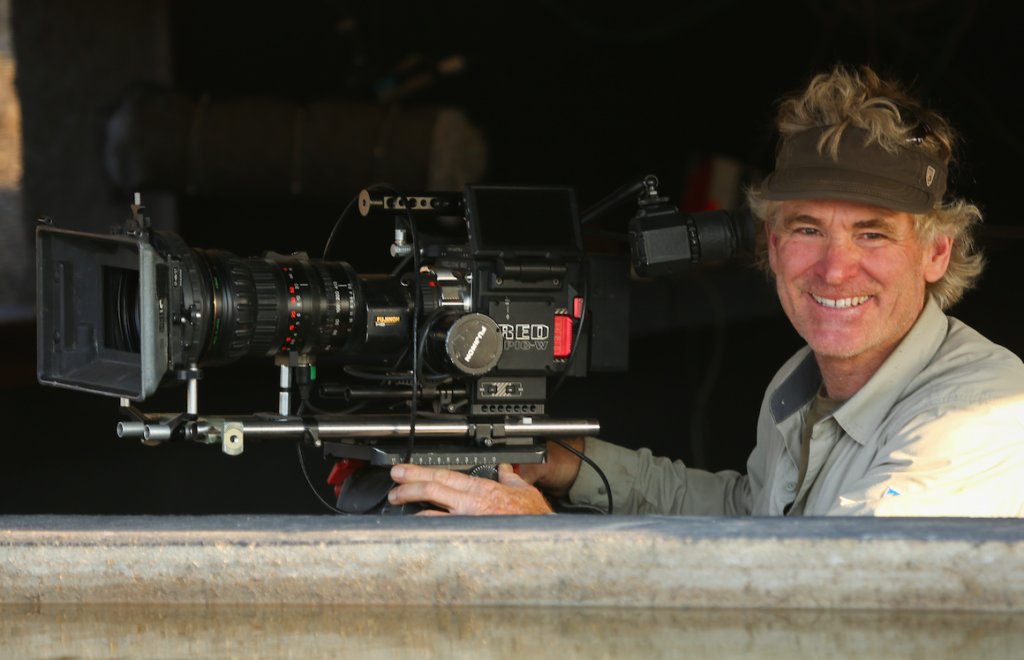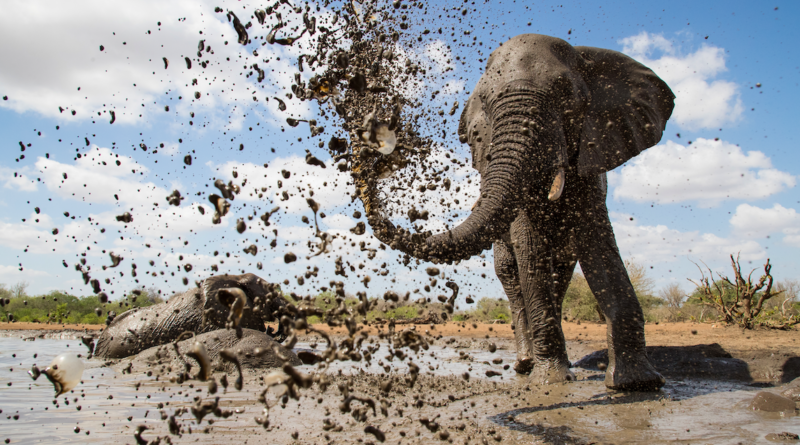INTERVIEW: Bob Poole investigates ‘Life at the Waterhole’ on PBS
Photo: African elephants are one of the animals featured on the new PBS series Life at the Waterhole. Photo courtesy of Isak Pretorius / Provided by PBS press site with permission.
PBS is set to premiere the new three-part series Life at the Waterhole, featuring Dr. M. Sanjayan and cinematographer Bob Poole. As the title suggests, the TV show will explore the wildlife that comes to a strategically located waterhole south of the Serengeti in Tanzania. What Sanjayan, Poole and their team members find is both wondrous and gorgeous.
Along the way, the team uses cameras that are weather-proofed and partially submerged in the waters, giving viewers a unique chance to see these unbelievable species from all angles. When the series premieres Wednesday, May 19 at 8 p.m. on the network, audience members will have an intimate glance at who decides to stop by the artificial waterhole and what natural dramas play out in front of the cameras.
“It was an immediate yes for me,” Poole said in a recent phone interview. “I love that territory. I feel really at home there. As you know, I grew up in that part of the world, and I’ve been working in that area since my career started. This is a very special place. It’s south of the Serengeti. It’s in a remote part of Africa that really very few people get to go to. It was a dream job for me.”
Poole and the team filmed the show over three periods of time: the beginning of the dry season, the driest/hottest time of the year and when the rains eventually came. Along the way, they found and filmed warthogs, elephants, cape buffalo, hyenas, birds and, of course, lions.
“This is such a remote and rarely visited place that it was new to me,” Poole said. “Waterholes are always an amazing place to stake out because in the dry season that’s where everything has to come day and night for water, so there’s a lot of action always around a waterhole. Now, this is a different scenario because it’s a man-made waterhole. I think one of the interesting things about the project is that if you look at wildlife conservation and the history of wildlife conservation in East Africa, there’s been a lot of man-made water holes, and not all of them have been good because, well, people used to make them for hunting. They used to make them to attract wildlife in places where there wasn’t a lot of wildlife, and you often change the landscape when you bring in a lot of game. A lot of people have been, and rightly so, against it for years, but what’s happening in Africa, where the actual space for wildlife is getting smaller and smaller, it’s not always ideal. Humans tend to take up the best space, and they guard and protect water sources. So wildlife have a hard time. It’s a good experiment to see is this an alternative for wildlife to make waterholes for them.”
Poole grew up in Kenya, and he began filming wildlife in his teenage years. He received commissions from National Geographic to track and photograph elephants, and then he moved into cinematography. Today, he can call himself an Emmy Award winner, someone who has worked with PBS, BBC and many other outlets.
“My role is a great one because I’m off on my own out in the bush in my Land Rover, just filming what I see, tracking lions, and it’s what I love,” he said. “I’m in this environment a lot, this kind of place, so I see a lot of things. What I learned on this one, and what I saw that I found really amazing, was I was tracking and following … a lioness with cubs. She was difficult. She was solitary, which is unusual for lions. Normally when you see lion prides, it’s a group of sisters, or at least somewhat-related females. … Lions communally raise cubs. Cubs get nursed off any of the females in the pride, right. It’s a very cool thing about lions, but she didn’t have anybody else to help her raise those cubs, and she had to do all the hunting by herself to feed herself and have enough for the cubs — all the while trying to protect those cubs, move them, hide them from other predators like hyenas.”
He added: “You wouldn’t believe the stuff that I would have to drive through to find her, very challenging conditions, but I love that.”
By John Soltes / Publisher / John@HollywoodSoapbox.com
Life at the Waterhole, featuring the work of Bob Poole and Dr. M. Sanjayan, will premiere Wednesday, May 19 at 8 p.m. on PBS. Click here for more information.


